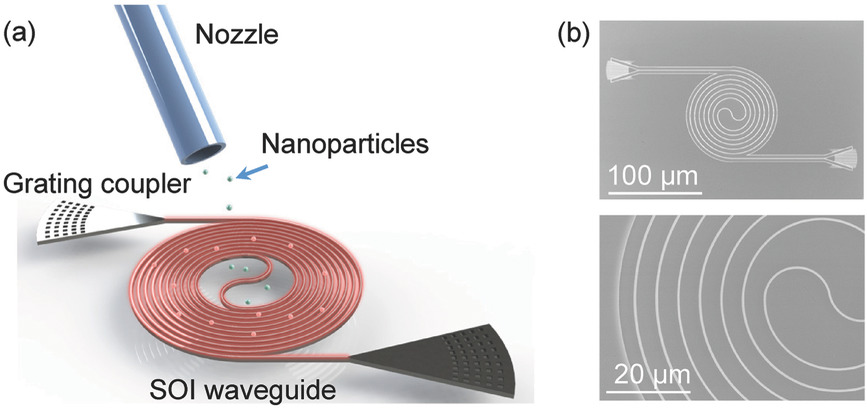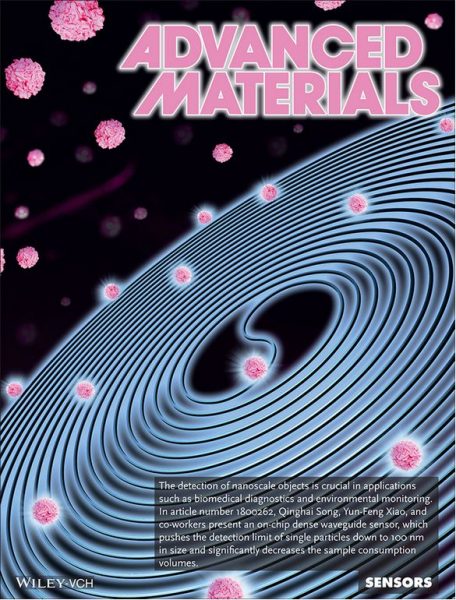Ultrasensitive and rapid detection of nanoscale objects is of crucial importance for various fields such as homeland security, environmental monitoring, and early-stage diagnostics. Among the many types of sensors available, optical evanescent field transducers have attracted much attention due to their distinguished advantages, such as high sensitivity, label-free nature, and noninvasive detection.
A team led by Professor Yun-Feng Xiao at Peking University (China), in collaboration with Harbin Institute of Technology (China), has proposed and experimentally demonstrated a novel on-chip dense waveguide sensor detect single unlabeled nanoparticles.
Existing optical sensors enable label-free detection down to single molecules and even single atomic ions and their sensitivity mostly surpasses the requirement of practical applications. However, their widespread use is severely hindered by many significant challenges, such as long response time, device reproducibility, and possible photodamage to the biological species.

a) Schematic of the dense waveguide sensor on the SOI platform. The particles are deposited by a nozzle with an inner diameter of around 35 µm. b) SEM images of the spiral waveguide and a detailed segment.
Professor Yun-Feng Xiao’s team fabricated a monolithic spiral waveguide and deposited aerosol nanoparticles onto the dense waveguide using a syringe pump. “Owing to the large evanescent field of the nanowaveguide, when nanoparticles are attached to the waveguide surface, the transmitted power decreases, because the nanoparticles scatter and absorb a portion of the probe light,” said Shui-Jing Tang, who is a Ph.D. student at Peking University. “This step in the transmitted power can be used to extract the information of each detected nanoparticle.”
The field distribution of waveguide mode was designed to enhance the scattering signal induced by the nanoparticles, and then suppressed the measurement noise to the level of 10−4 in the transmitted power. Through monitoring the step changes in the transmission, the silicon waveguide sensor was successfully used to detect single particles down to the size of 100 nm with a signal-to-noise ratio above 5 dB.

This work is highlighted by a frontispiece, which appears in Advanced Materials Issue 25, 2018.
Professeor Xiao added “More importantly, the dense nanowaveguide design provides an enlarged sensing area, and can thus significantly enhance the nanoparticle-capture efficiency, which is very important for achieving ultrasensitive detection with short response times.”
This silicon-based waveguide sensor can be fabricated reproducibly by conventional semiconductor processing techniques and is compatible with surface functionalization chemistries and microfluidics, which could lead to widespread use for sensing in various fields such as early‐stage diagnostics, environmental monitoring, and high‐throughput drug discovery.

















